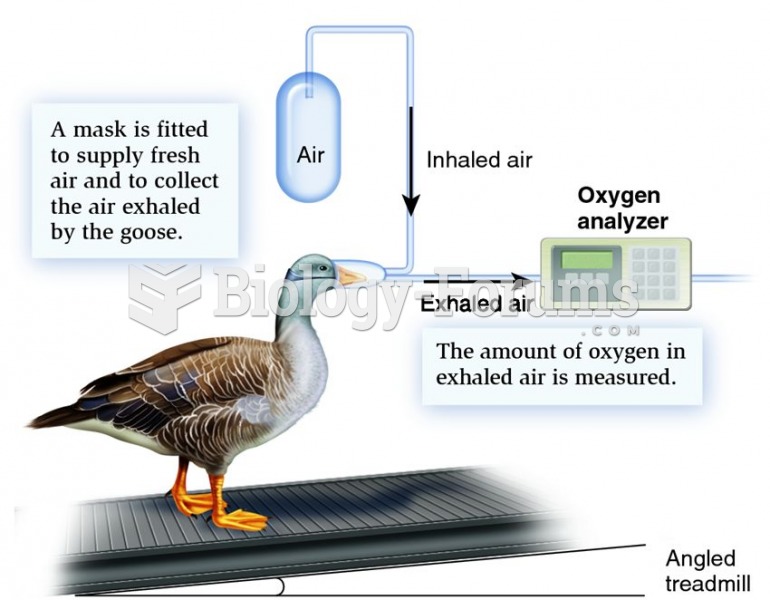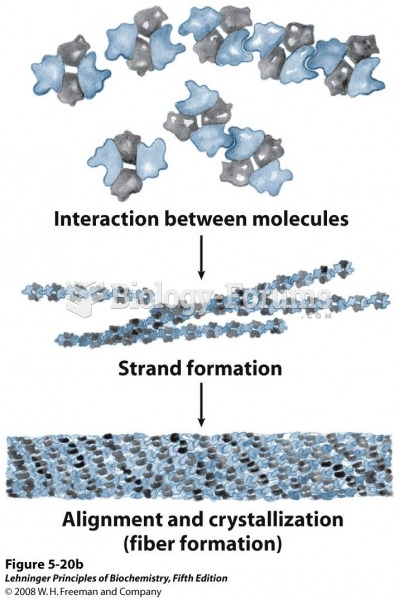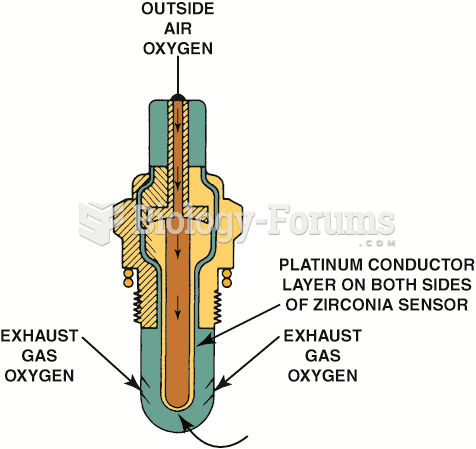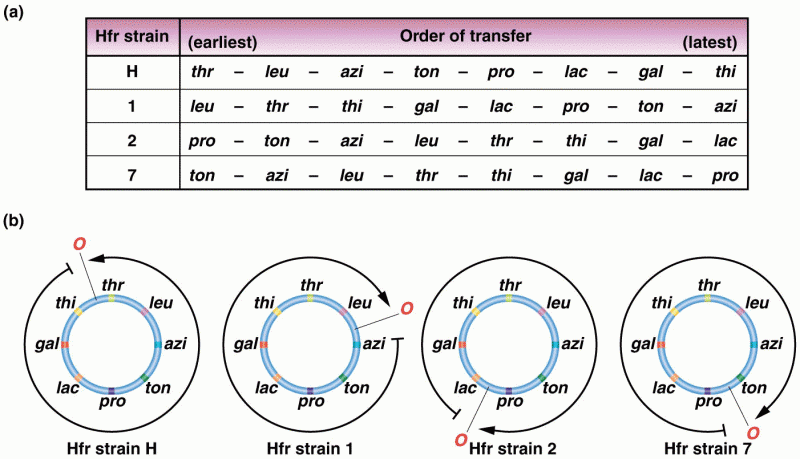|
|
|
To maintain good kidney function, you should drink at least 3 quarts of water daily. Water dilutes urine and helps prevent concentrations of salts and minerals that can lead to kidney stone formation. Chronic dehydration is a major contributor to the development of kidney stones.
Nearly 31 million adults in America have a total cholesterol level that is more than 240 mg per dL.
The ratio of hydrogen atoms to oxygen in water (H2O) is 2:1.
People with alcoholism are at a much greater risk of malnutrition than are other people and usually exhibit low levels of most vitamins (especially folic acid). This is because alcohol often takes the place of 50% of their daily intake of calories, with little nutritional value contained in it.
Egg cells are about the size of a grain of sand. They are formed inside of a female's ovaries before she is even born.







